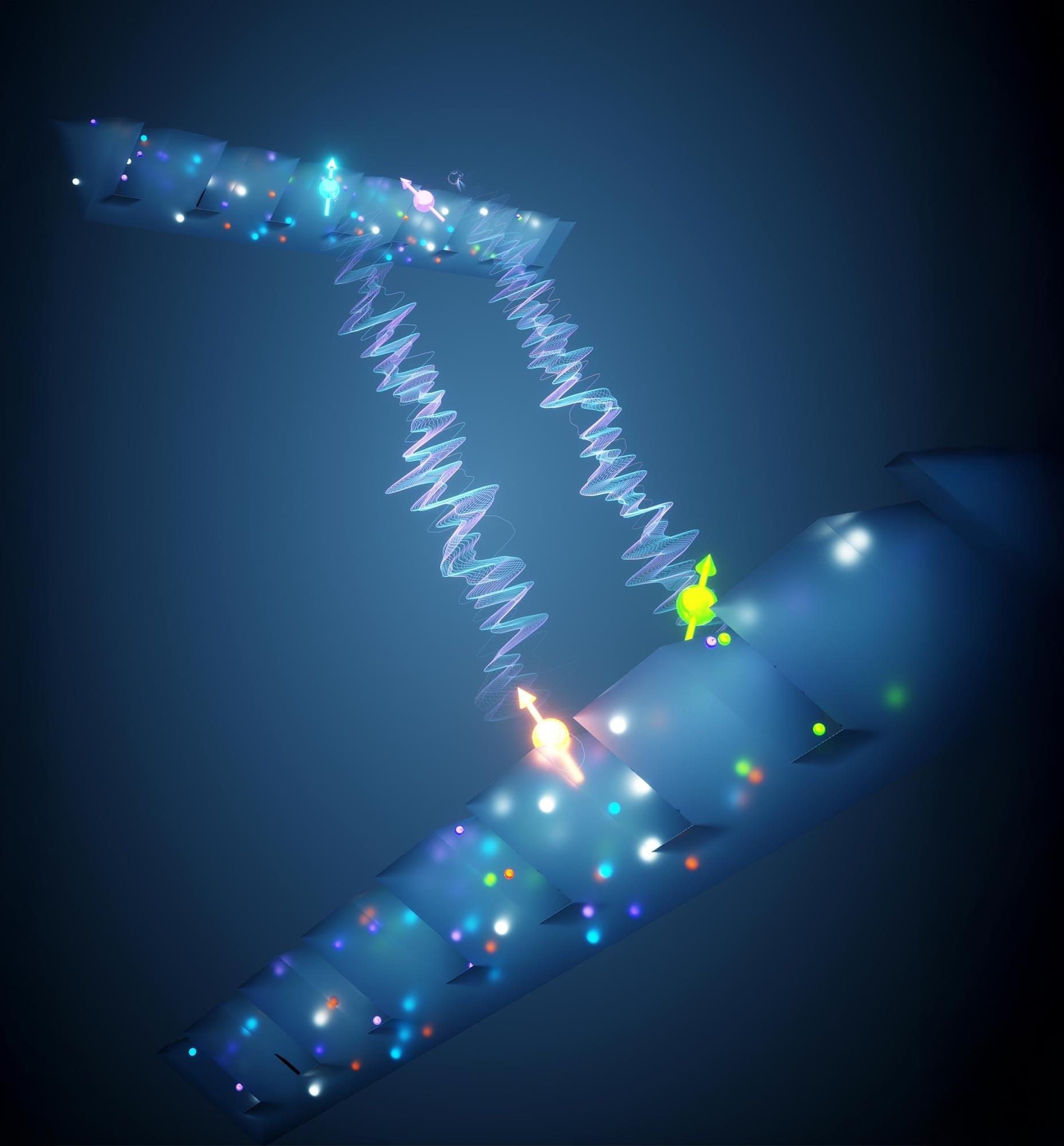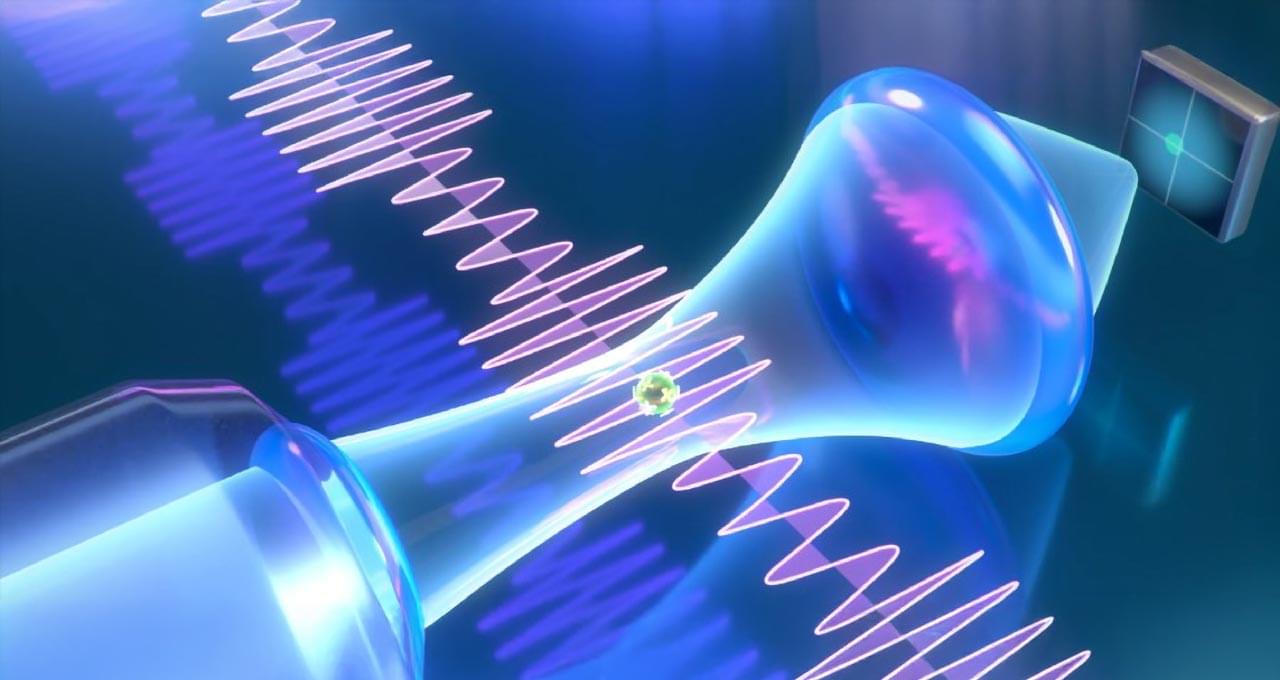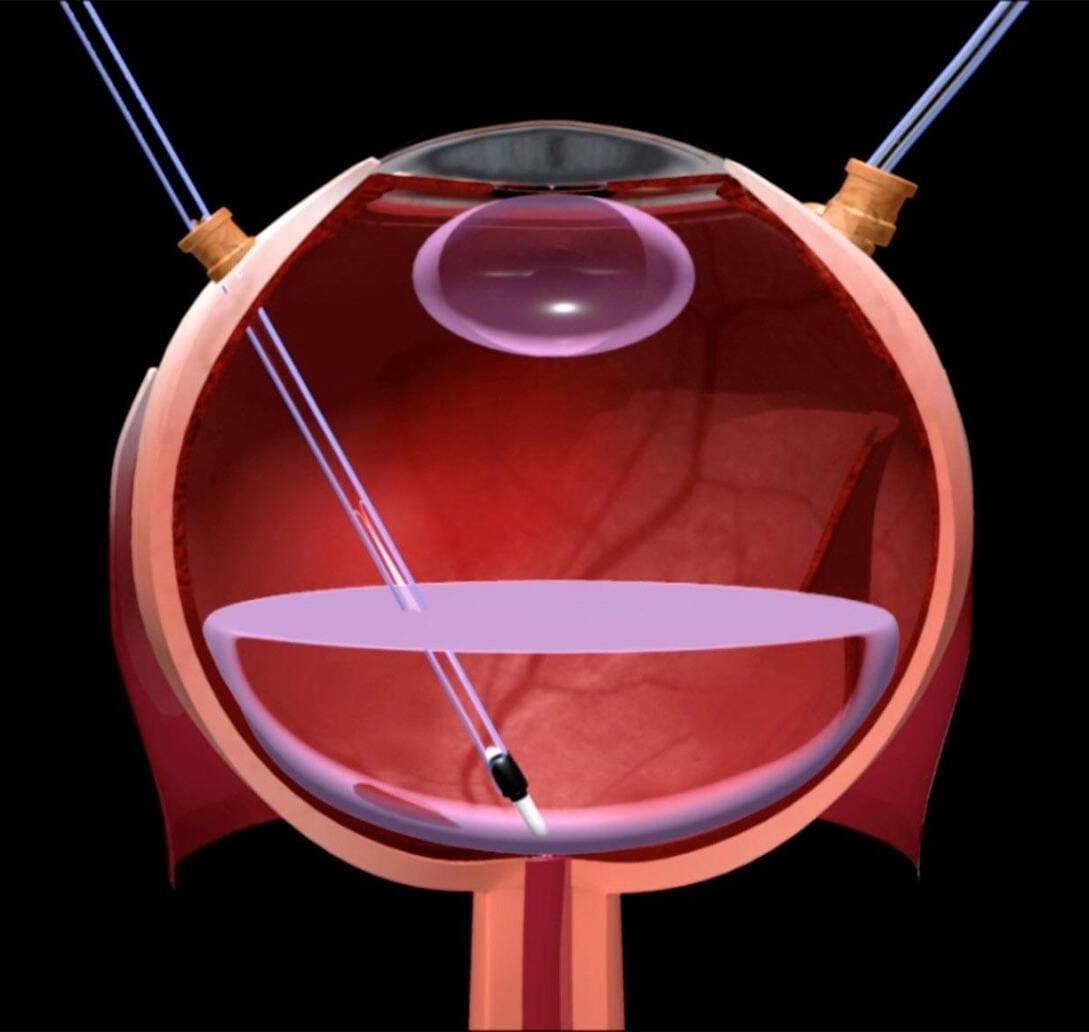Unravel the mysteries of the human brain with this captivating video! Discover the incredible complexity of neurons, explore the quest for a connectome, and dive into the challenges and potential breakthroughs in understanding the human mind.
Category: innovation – Page 39

Scientists Just Cracked the Code to Supercharge Quantum Networks
Caltech engineers have made a breakthrough in quantum communication by successfully linking two quantum nodes with multiple qubits.
Using a novel multiplexing technique, they drastically increased the data transmission rate, setting the stage for large-scale quantum networks.
Laying the groundwork for quantum networks.
Is This the Future? Japanese Scientists Create Living Robots with Human Skin! Joe Rogan Experience
Discover the groundbreaking advancements in robotics as Annie Jacobsen and Joe Rogan discuss a startling innovation: a robot made from living human skin. This fascinating creation not only smiles but raises ethical questions about the future of artificial humans. How close are we to creating a fully artificial person? Join the conversation about the implications of these technologies, especially in countries with different regulations. Don’t miss this eye-opening discussion!
Living robot skin
In a scientific breakthrough, Japanese scientists have found a way to attach artificially created living skin to robot faces for more realistic smiles and facial expressions.
#japan #robots #wion.
About Channel:
WION The World is One News examines global issues with in-depth analysis. We provide much more than the news of the day. Our aim is to empower people to explore their world. With our Global headquarters in New Delhi, we bring you news on the hour, by the hour. We deliver information that is not biased. We are journalists who are neutral to the core and non-partisan when it comes to world politics. People are tired of biased reportage and we stand for a globalized united world. So for us, the World is truly One.
Please keep discussions on this channel clean and respectful and refrain from using racist or sexist slurs and personal insults.
Check out our website: http://www.wionews.com.

Reality is not revealed by quantum mechanics
“According to Hooke, microscopes, like telescopes, put us on the cusp of doing what philosophers from Antiquity onwards had always tried to do, namely, understand the fundamental nature of reality,” writes assistant professor in philosophy, Peter West.
The idea that we can discover the fundamental level of reality might be alluring, but it’s based on a faulty philosophy, not science, argues Peter West.
Tap to read more about his beliefs that reality is not revealed by quantum mechanics.
The craze with all things quantum is not just because of its inherent weirdness. It’s motivated by a reductionist impulse that has been animating science from Robert Hooke in the 17th century to Stephen Hawking in the 21st. The idea that we can discover the fundamental level of reality might be alluring, but it’s based on a faulty philosophy, not science, writes Peter West.
The idea that reality is reducible to its most fundamental parts still animates much of science, particularly physics and philosophy. The craze with all things quantum is partly animated by this thought: understand quantum mechanics, the way that matter behaves at the smallest level known to us, and you’ve understood everything. But this philosophical impulse — because contrary to belief, it’s not scientific — that the microscopic holds the key to the secrets of the universe, is much older than quantum mechanics. It goes back at least all the way to the 17th century and the invention of the microscope. Some of the best critiques of reductionism also date from the same century: Size doesn’t matter, the very small is just one realm of reality among many, with no special privilege.
Sign up to get exclusive access.


Breakthrough Stem Cell Therapy Could Restore Vision for AMD Patients
A study suggests that patients with wet AMD may regain vision through a novel approach — removing abnormal blood vessels and transplanting stem cell-derived retinal cells.
Patients with complete vessel removal saw better outcomes, hinting at a potential game-changer for vision restoration.
The devastating impact of wet AMD.

Humanoid robots enter full-scale commercial production in China
A robotic labor force.
Engineering companies in China have begun the process of starting full-scale mass production of humanoid robots in anticipation of a commercial boom in 2025. Companies such as Shanghai Zhiyuan Innovation Technology (AgiBot) and Shanghai Kepler Robot Company have already been testing the robots to optimize performance while reducing production costs.
New Breakthrough: New Light-Based Computer Takes Over!
Take your personal data back with Incogni! Use code INTECH at the link below and get 60% off an annual plan: http://incogni.com/intech.
Timestamps:
00:00 — New Chip Explained.
13:40 — How it compares to GPUs.
The videos I mentioned:
Reversible Computing • New Computer Chip is Defying the Laws…
Probabilistic Computing • Future Computers Will Be Radically Di…
My course on Technology and Investing ➜ https://www.anastasiintech.com/course.
Let’s connect on LinkedIn ➜ / anastasiintech.
More info on Q.ANT: https://qant.com

Researchers use 3D printed molds to produce neural interfaces
Neural interfaces are crucial to restoring and enhancing impaired neural functions, but current technologies struggle to achieve close contact with soft and curved neural tissues. According to Pusan National University, researchers have introduced an innovative method – microelectrothermoforming (μETF) – to create flexible neural interfaces with 3D micro-structures. Their findings show how this method improves neural recording and stimulation, with potential applications in artificial retina devices and brain-computer interfaces.
Microelectrode arrays (MEAs) are widely used for recording brain activity and stimulating neural tissues. However, conventional MEAs are typically flat – limiting their ability to conform to the natural curves of neural structures. Existing methods for adding 3D features require multiple fabrication steps – increasing complexity and restricting design possibilities.
To overcome these limitations, a team led by Associate Professor Joonsoo Jeong and Associate Professor Kyungsik Eom developed μETF – inspired by plastic thermoforming, a common technique for molding plastic sheets into different shapes. The findings are published in the journal of npj Flexible Electronics.